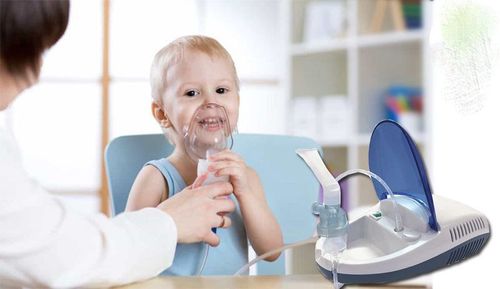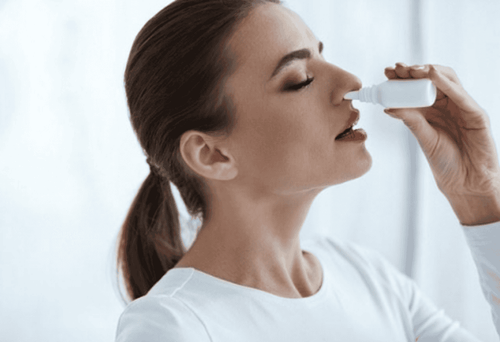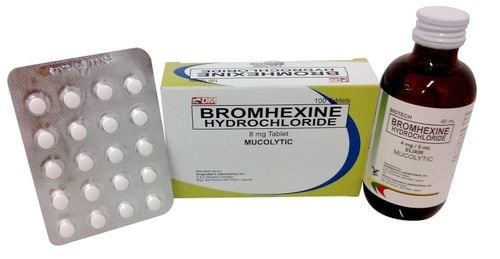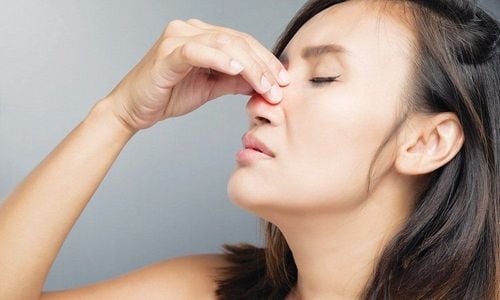This is an automatically translated article.
The article is professionally consulted by Master, Doctor Ngo Thi Oanh - Pediatrician - Pediatrics - Neonatology - Vinmec Ha Long International General Hospital.
Nebulization is a method of local treatment of respiratory diseases by delivering drugs directly into the respiratory mucosa. The nebulizer will convert the drug into a mist, which helps the drug to stay on the respiratory mucosa, penetrate deep into the bronchi for quick effect and minimize the side effects caused by oral drugs.
1. What is aerosol?
Normally, aerosol is mainly used in the treatment of asthma, chronic obstructive pulmonary disease and some other respiratory diseases. Preparations commonly used for nebulization include:
Corticosteroids Bronchodilators Antibiotics, expectorants Physiological saline 0.9%. A nebulizer is a device that converts medicine in the form of a solution or suspension into a fine mist that goes deep into the lower respiratory tract and settles there. The machine is suitable for young children, the elderly and seriously ill patients who cannot hold the inhaler and inhale deeply with the correct technique.
Should you use a nebulizer regularly? There is no denying that the improvement in respiratory pathology from the nebulizer is obvious. Thanks to the nebulizer ventilator, many children did not need to take oral medication, limiting the side effects caused by the drug. However, if used a lot, using the wrong way of using a nebulizer can lead to too much aerosolization and drug dependence, causing long-term damage to the lungs (because most nebulizers are corticosteroids, using an overdose of can cause extremely dangerous side effects) due to the drug being deposited in the lungs.
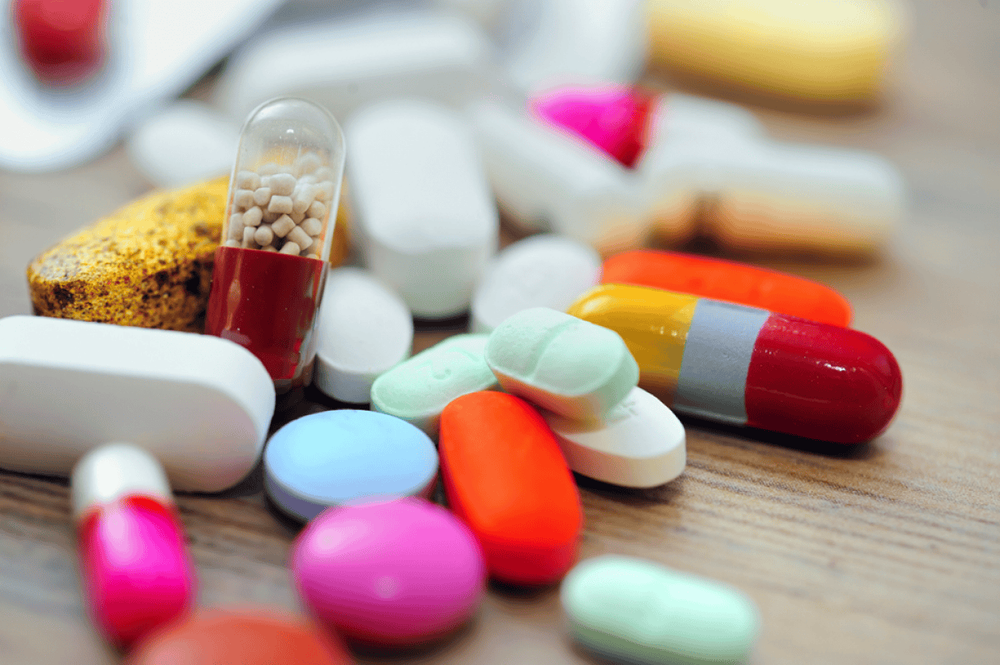
Thuốc giãn phế quản là một trong các chế phẩm thường dùng để khí dung
2. Notes when using a nebulizer
When using a nebulizer, it is important to note:
Examination and use of drugs for nebulization as prescribed by a specialist. For example, if you have respiratory allergies, allergic rhinitis, etc., you usually use inhaled corticosteroids for prevention; Children under 1 year of age who are prone to bronchiolitis due to obstruction of viscous sputum should be nebulized with saline to expel mucus. Do not arbitrarily use fumigant. If used incorrectly, not only does not cure the disease, but also makes the disease worse and affects health. Observe how to use a nebulizer and how to mix medicine because if you mix it with the wrong dose, the mist particles of the wrong size will not work inside or stick to the throat wall. If there are side effects such as feeling dizzy or restless, stop nebulizing for about 5 minutes. After resuming nebulization, the patient needs to breathe more slowly. If the feeling of restlessness and dizziness persists during the next treatment, it is imperative to notify the doctor so that the doctor can adjust the dose or replace the drug. When nebulizing with a nebulizer, ensure hygiene, use a separate wire and mask. Wash with disinfectant solution after each inhalation and before inhalation. After using the nebulizer for a period of time, it is necessary to thoroughly clean, wash and dry the mask and mouthpiece. The medicine cup needs to be disassembled for three parts, pour out excess medicine, wash it with soapy water, rinse it with warm water, then dry the parts with a clean towel, and dry the tool in a cool place. Replace the air compressor filter according to the manufacturer's instructions (usually every 6 months). Be careful with essential oils because some are not recommended for infants or very young children, which can cause respiratory depression. Do not abuse indiscriminately, because it can make you addicted and reduce your sense of smell.

Trẻ bị viêm mũi dị ứng thường dùng thuốc xông dạng corticoid để dự phòng
3. How to use the nebulizer
Step 1: Place the nebulizer on a stable and flat surface. Assemble the components and connect the machine to the power source according to the manufacturer's instructions.
Step 2: Clean your hands and then use a clean tube to take the medicine into the medicine cup. Note: the amount of liquid in the medicine chamber should not be less than 2.5 ml; In case this threshold is not reached, it is necessary to add 0.9% physiological saline until this threshold is reached.
Step 3: Cover the medicine cup. Then, the top of the medicine cup attaches to the mask or mouthpiece. The bottom of the cup and the air duct attach to the air compressor. After correctly attaching the above steps, turn on the nebulizer to check if mist is sprayed.
Step 4: The patient sits upright so that the lungs are dilated for good treatment results. In case the patient uses a mask, adjust the belt and wearing position to fit the face. Children who are old enough are encouraged to sit upright and breathe normally. Young children are held in an upright sitting position and then asked the patient to breathe deeply and slowly through the mouth so that the medicine can be deposited in the respiratory tract.
Step 5: Use a nebulizer for a maximum of 5 - 15 minutes. During aerosolization, the medicine may stick to the side of the medicine cup, knocking or gently shaking the cup to make the droplets fall. When the mist is no longer visible and the machine emits a puffy sound, turn off the machine.
Besides using a nebulizer, people with a history of respiratory diseases need to keep their body warm, especially the respiratory part; should not lie in the air conditioner or drink ice water; regular oral hygiene; wear a mask when going out,...
Please dial HOTLINE for more information or register for an appointment HERE. Download MyVinmec app to make appointments faster and to manage your bookings easily.




